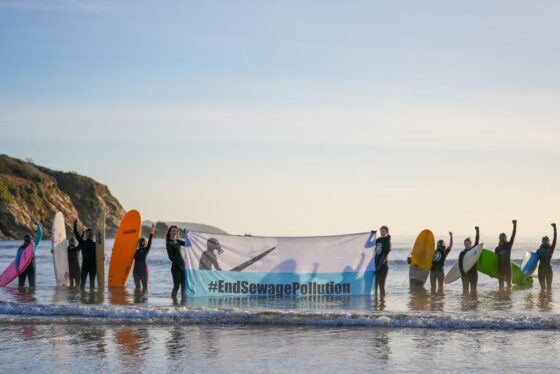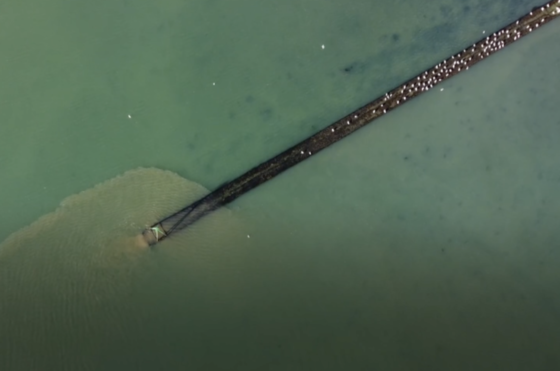
‘Dirty secrets’: water companies are dumping sewage in dry weather, report reveals

Surfers Against Sewage (SAS) has released its 2022 Water Quality Report, which uncovers potential illegal sewage discharges, as well as shocking statistics from 700 sickness cases reportedly related to swimming in polluted waters.
According to data from The Environment Agency, over the course of 2020 and 2021, sewage has been dumped into the ocean and rivers around the UK more than 770,000 times.
Now, for the first time, the marine conservation charity SAS has used rainfall data to investigate potentially illegal ‘dry spills’. Sewage outflows are only permitted in ‘unusually heavy rainfall’, but SAS says its analysis shows water companies have been dumping untreated sewage into the UK’s waterways even when there hasn’t been any rain, including the exceptionally hot summer.

SAS has analysed the latest sewage data from the Environment Agency to reveal where and for how long sewage discharges into bathing waters happened across the UK this summer.
During the 2022 bathing season, the analysis finds that UK water companies discharged sewage into bathing waters around the country for 15,012 hours.
A staggering 103 sewage overflows at bathing waters across England failed to report their activity for a period of more than two weeks during the bathing season. And 44 sewage overflows were found to have been left completely unmonitored throughout the entire bathing season.
Monitoring of data published by Southern Water reveals the company discharged sewage into UK water for more than 3,700 hours at 83 bathing beaches in the first eight days of November alone (the equivalent of five months’ worth).

Sewage spills into Langstone Harbour. Image courtesy of Chris Pearsall
Southern Water has blamed the releases on stormy weather, experienced during the first week of the month, which overwhelmed drains.
Since October 2021, SAS has issued a total of 9,216 sewage pollution alerts for locations included in the Safer Seas & Rivers Service, 2,053 of which were during the 2022 bathing season alone.
Bonuses for water bosses in England went up 20 per cent last year despite sewage failures, whilst a total of £965 million was paid out to shareholders – despite all but one water company making a loss this year.
“Shareholders and CEOs are unashamedly profiteering off pollution,” says Amy Slack, head of campaigns and policy at SAS. “And the government is complicit in the sewage scandal, failing to enforce and strengthen regulations to protect the health of the UK’s waterways – and the health of its citizens. Politicians are simply kicking the can down the road, legitimising sewage pollution for the next 27 years, through the sewage action plan published this summer.”
SAS has received 720 sickness reports in total from water users who got ill after going in the water in the last year, with more than 70 per cent of them suffering from symptoms of gastroenteritis, including persistent diarrhoea and vomiting. The charity documents case studies including cases of leptospirosis and kidney failure to conjunctivitis.
Two-thirds of cases who saw their doctor had their sickness attributed to contaminated water exposure, and many reported stays in hospital. A third of reports were directly linked to a sewage spill. In total, over 400 reports of sickness were from official bathing waters classified as ‘excellent’.
Now, SAS is urging people to contact their MP to raise the issues raised in their report.
British water firms have been criticised this year for the number of pollution incidents taking place under their watch. In August, beachgoers were told to keep out of the water across dozens of beaches in the UK, after untreated sewage was pumped into the sea following storms.
In October, MIN reported on the outrage generated by a video of sewage overflow being pumped into clear blue waters at a picturesque public beach in Cornwall.
In a statement, SAS says: “Water companies keep dirty secrets behind opaque data. CEOs stuff their pockets with cash, and the government twists the knife in the wound.”
